Garden design was not taught at the influential Bauhaus design school founded by Walter Gropius in 1919, but the popular Bauhaus concept of bringing art, craft and technology into one complete work, the
Gesamtkunstwerk, later found its way into houses and landscapes. We now see expressions rooted in these Bauhaus concepts in our gardens — as integrated living systems between house and garden, combined with functional design without decoration.
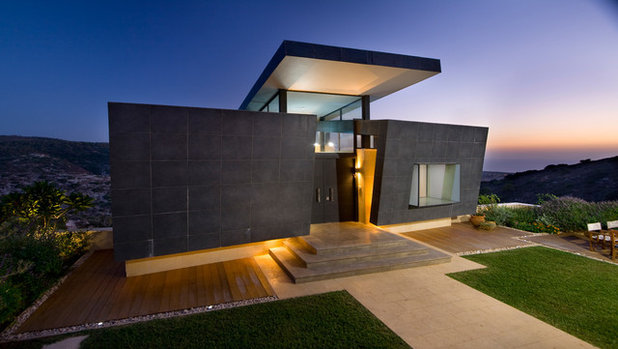
Elad Gonen
The Arts and Crafts movement influenced some features of the Bauhaus school, including the value of quality craftsmanship and materials, though its strong use of decoration was rejected. Early gardens created following the edicts of the Bauhaus movement were built by modernist architects, not gardeners; Walter Gropius designed only one garden, at England's Dartington Hall, in the 1930s.
Modernist houses in the 1920s and 1930s were built based on geometric shapes with an eye to form following function. Gardens began mirroring the house design as part of the overall site design, becoming more than just a decorative element surrounding the house.
We can see this executed in the contemporary example shown here.
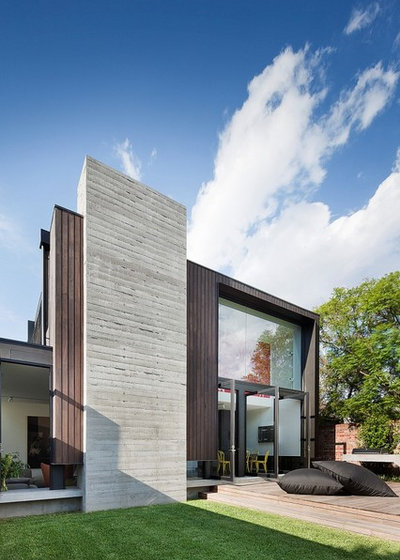
Nixon Tulloch Fortey Architecture
Economy of design. Bauhaus students were taught that beauty was to be found in economy of form and in how materials were used.
Here we see a design that has economy of design, with materials linking the building and garden — the wood siding on the house links with the garden decking, and the concrete patio links with the board-formed concrete on the house.
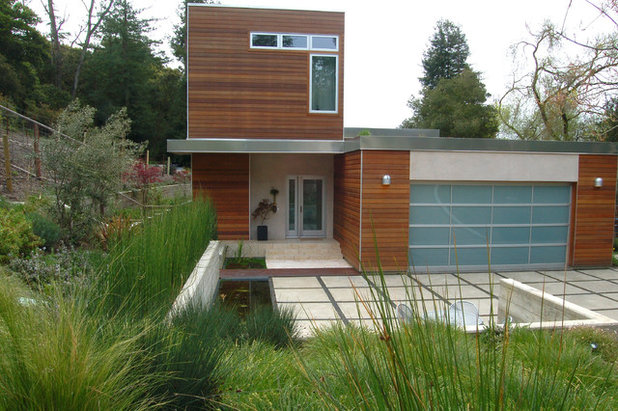
Huettl Landscape Architecture
This does not mean that landscapes must avoid plants, using only hardscape and grass to echo the geometric shapes of the architecture.
Here the planting has been carefully chosen to enhance the overall design without being overly decorative. The planting design is functional — both economical in its use and practical in its low maintenance.
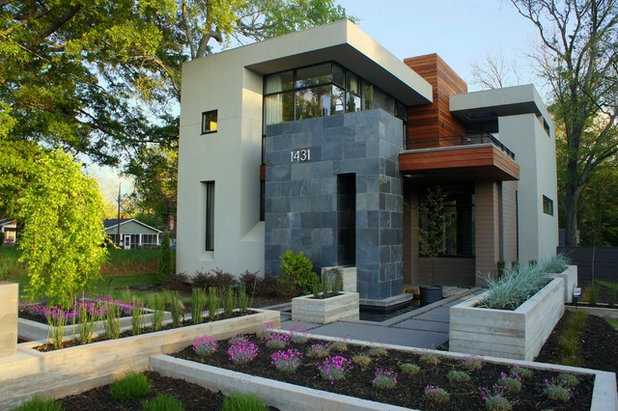
West Architecture Studio
Integration of house and garden. This house and garden are a great example of the Bauhaus concept of
Gesamtkunstwerk — or "complete work."
The garden is integral to the overall design of the building and cannot be separated from it. The formality of the planting within the geometrically shaped raised beds prevents any softening or blurring of the overall design.
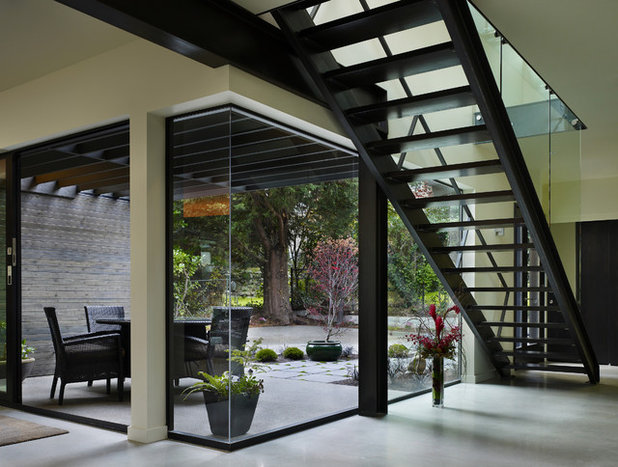
BAAN design
This space is the ultimate integration of house and garden. Not only does it seamlessly link the inside to the outside, but it embraces the use of new technology and materials to create a seamless connection — so loved by the followers of the Bauhaus movement.
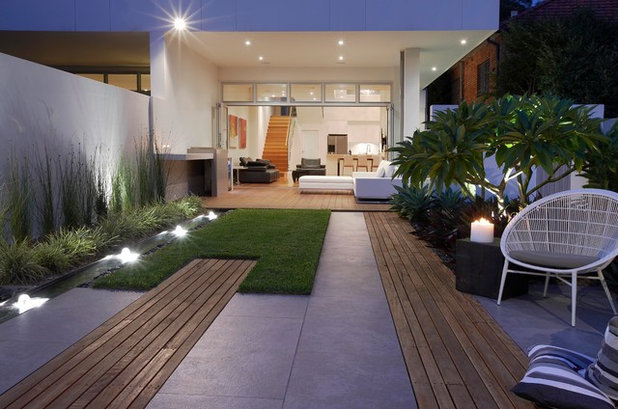
Dean Herald-Rolling Stone Landscapes
Bauhaus design ideas work well in the design of smaller outdoor spaces. Here we see the ideals of rationality, functionality and the use of simplified forms brought together in a modernist courtyard garden.

Cultivart Landscape Design
Functional design. Functional design is a keystone of Bauhaus design used widely today in garden design. Instead of hardscaping and plant selection being used purely for decorative purposes, features within the garden work for their keep in addition to being visually satisfying.
The beauty of this seating area is the careful selection of two materials — concrete and wood — that creates a very simple design, one that is not diluted by the strong planting behind.
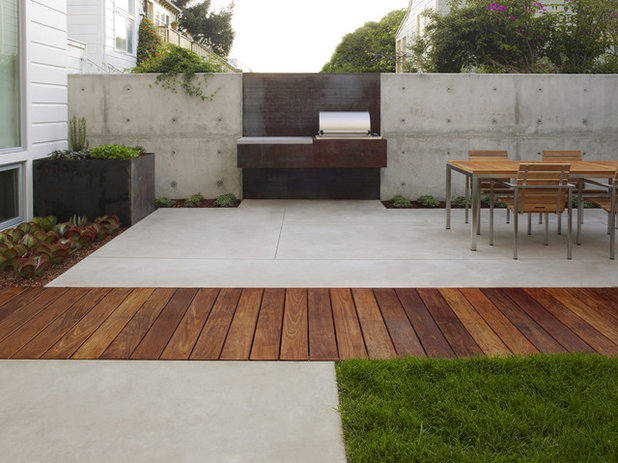
Christopher Yates Landscape Architecture
Each piece of this garden has an individual use, but they all come together to create a complete design. The barbecue and dining set are clean and functional, not ornamental, fitting with the simplicity of the scheme. The concrete wall has been carefully chosen, creating an almost industrial feel.
These features follow the preference of Bauhaus designers for products that could be industrially produced yet were aesthetically pleasing.
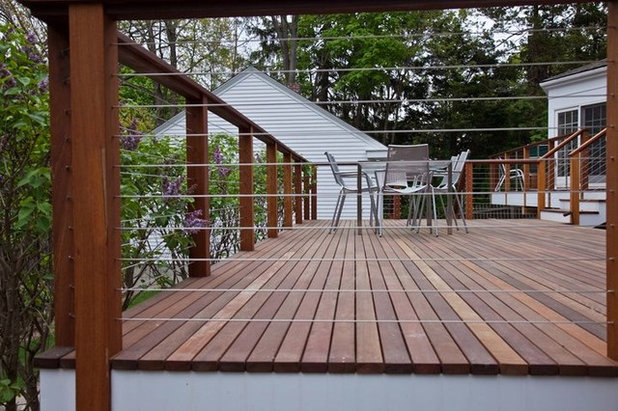
Matthew Cunningham Landscape Design LLC
Even in hardwood decking, the most basic of contemporary garden design features, we can see the influence of Bauhaus design principles.
Both the decking and wire fencing here fulfill their purpose without the use of extraneous decoration; they are simple and economical, and yet again the form follows the function.





